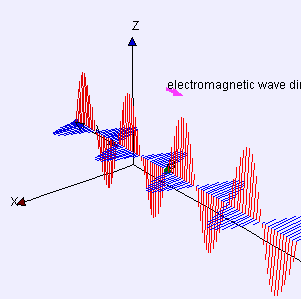

High energy electromagnetic radiation (eg. Light is carried in discrete quanta packets (photons).Ĭonnection to Big Idea about evolution: Light intensity and availability has a substantial influence on biodiversity as it is essential for many processes (like photosynthesis). Thus, they can become ionized or interact with each other.Ĭonnection to Big Idea about quantum: When light is shed onto a material, its particles will interact with the incoming photons and emit electrons (photoelectric effect). Subatomic particles interact with each other emitting electromagnetic radiation. Atoms and molecules can absorb electromagnetic radiation which increases their kinetic energy. Currently scientists are looking for ways to detect other types of radiant energy like neutrinos and gravitational waves which will change radically the way we perceive our universe.Ĭonnection to Big Idea about particles: Electromagnetic radiation is carried by particles called photons. Electromagnetic radiation is the only mean we have so far to collect information from the universe. An example of such an interaction are the tails of comets which always have a direction opposite to the Sun due to its radiation pressure.Ĭonnection to Big Idea about the universe: Stars and galaxies throughout the Universe emit electromagnetic radiation at different wavelengths. Radiant energy is the energy of electromagnetic waves.Ĭonnection to Big Idea about forces: When a surface is exposed to electromagnetic radiation, photons interact with that surface (causing what we call) radiation’s pressure) and thus a force acts on it. There are many types of these waves depending on the frequency (X-rays, Ultraviolet, Visible light, Infrared etc). The microwave oven works with the concept of radiant energy (electromagnetic waves).Energy > Energy and forces > Electromagnetic radiation and radiant energyĮlectromagnetic radiation (light) is electromagnetic waves that propagate through space. For example, when micro-waves (which forms part of the entire spectrum) are set-off in a microwave oven, the water molecules in the food are charged and caused to vibrate billions of times per second, generating heat that causes the food to cook. When radiant energy comes into contact with matter, it changes the properties of that matter. In the illustration above, you will see the different radiant energy levels represented by their wavelengths. White light, for example, is a form of radiant energy, and its frequency forms a tiny bit of the entire electromagnetic spectrum.


The shorter the wavelength, the higher its frequency, and vice versa. The entire wave system from the lowest frequency to the highest frequency is known as the electromagnetic spectrum. There are different kinds of electromagnetic waves, and all of them have different wavelengths, properties, frequencies, and power, and all interact with matter differently. The energy in the electromagnetic waves is what we call radiant energy. These waves resemble the ripple (mechanical) waves you see when you drop a rock into a swimming pool, but with electromagnetic waves, you do not see them, but you often can see the effect of it. Now, the electrical field induced causes waves, called electromagnetic waves, and they can travel through a vacuum (air), particles or solids. That is possible by electromagnetic waves.īefore we go any further, let us understand what electromagnetic waves are.Įach time static energy from electric and magnetic force comes together, they induce an electric field around them.Īn example of an electric static force is the shock you get when you hold a metal doorknob.Īn example of a magnetic force is the pull that attracts metals to the magnet. The sun’s heat is not transmitted through any solid medium but a vacuum. For example, we receive the heat from the sun, which is located very far from the earth via radiation. It is a form of energy that can travel through space. Radiant energy is the energy of electromagnetic waves.


 0 kommentar(er)
0 kommentar(er)
